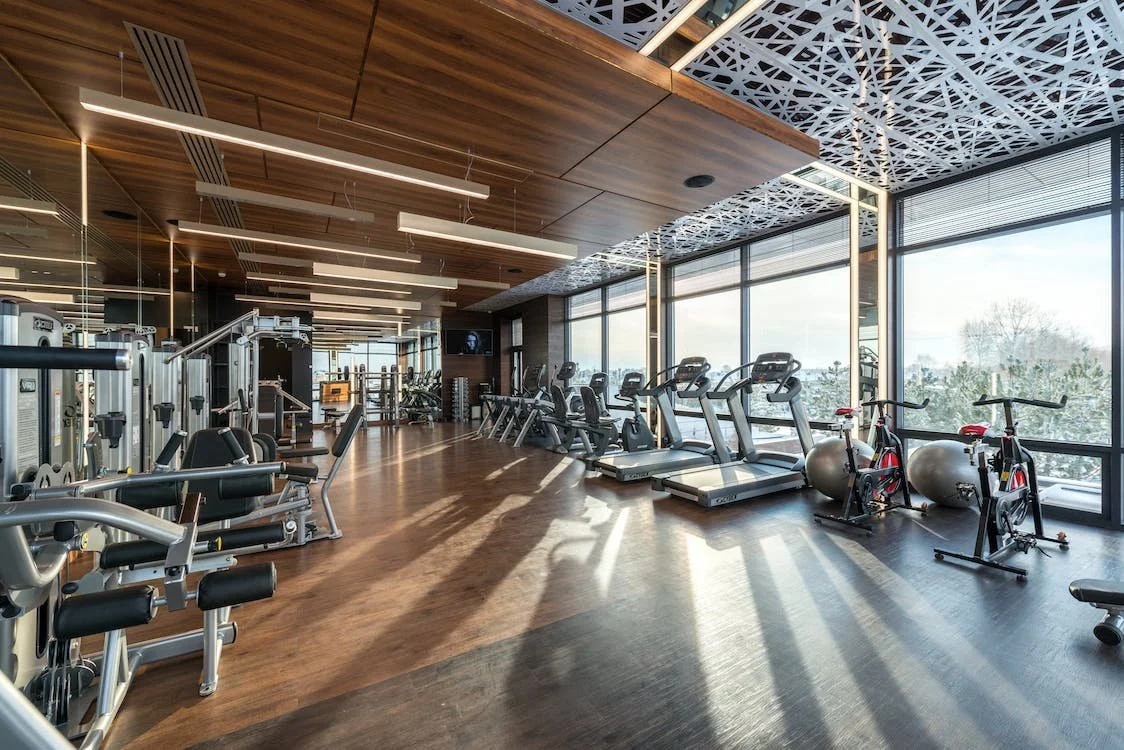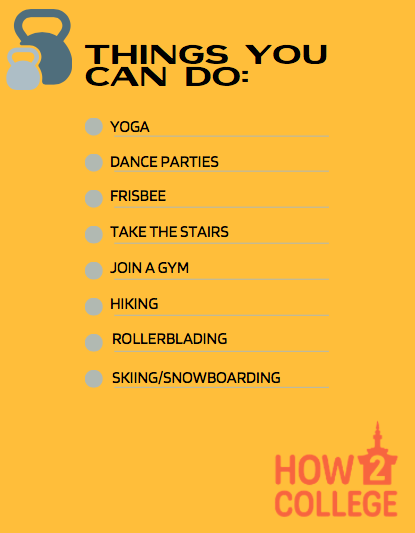Now What? My Days as a Collegiate Athlete are Over
By Madeline Olson
Spring 2023
My Days as a Collegiate Athlete are Over
Struggling to find the motivation to work out after college athletics? As a former college athlete, I have struggled for years on how to find the motivation to work out alone, make my own workouts, and even get myself to the gym. If you don’t know where to start or are looking for someone to give you that little extra push to get into the gym you’ve come to the right place.
As a former college athlete, you’ve never created your own workouts before. Someone has always provided a time and location of when and where you would be working out and exactly what you would be doing during the workout session. Then boom, college athletics are over, and you say to yourself, “I have no idea how to work out on my own.” Similarly, you have never had to find the motivation to go to the gym within yourself because, shocker, it was always required, and you quite literally didn’t have the choice on whether you wanted to go to the gym.
You have also always had people to work out with. Your teammates, the people who always held you accountable and made you work hard for the team when you could no longer work out for yourself, were always there to motivate you to get yourself in the gym. Unfortunately, you no longer have these people to motivate you and you must find that motivation from within yourself.
From personal trainers to experienced coaches, exact workouts were created to target specific parts of one’s body. To build strength, and muscle, or increase speed, any workout imaginable was created to guarantee results for the perfect body on and off the field. This, however, is a luxury you no longer experience post athletics.
Since I’ve essentially covered all the struggles of what it’s like to no longer be a part of college athletics or high school athletics and really proven my point that you need to figure this out by yourself, I’m going to tell you what you should do now.
Acknowledge that you are no longer an athlete, and no one is ever going to require you to work out again.
Admit that no longer participating in athletics sucks but at least you no longer have 5 am lifts and you will never be required to do another mile run (unless you want to).
Figure out what you like to do to move your body! You don’t have to lift weights or do insane amounts of cardio like you used to. Try out a bunch of crazy, fun, and weird ways to move your body and find out what you like best.
Once you have established the ways you enjoy working out, invite friends to come with you. Creating a group of friends or family that enjoy the same activity will help strengthen your relationship and hold each other accountable to work out and maintain a schedule.
Who Can Help?
Northwestern Counseling has a multitude of options and notes on how to help athletes transition out of sports participation. Recognizing that the transition out of your time in athletics is not just a change but a process, it is going to take time to adopt a new schedule and what your day-to-day life is now going to look like. From counselors to family and friends, there is a large support system available to help athletes combat the feelings and emotions after leaving athletics.
Dr. Kerulis, of Northwestern Counseling, stated, “It’s important for adults to show young people that perfection and high performance are not the only avenues of self-worth.” Understand that your time as a collegiate athlete is not the only reason you are valuable. Stepping away is a complex process, with a multitude of emotions, but you have to remember that this is not a battle you have to fight on your own.
The loss of self-confidence and the lack of purpose is something that is experienced by many retired athletes. You are not alone in this. Similarly, with the shift from being a collegiate athlete to an adult with a job and potential family, finding time and motivation to workout may be difficult for you. Cleveland Clinic offers insight on how to adjust to life post athletics. Ranging from finding new motivation to keep the sports that once heavily occupied your life to creating moderate long-term workout plans, all are capable of being implemented throughout your adult life.
Establishing a consistent workout routine is for yourself. Outside sources are available to help but ultimately everything is resting on you. Motivation is a difficult concept to grasp and maintain, but we can all find motivators within ourselves.
According to Harvard Health, only 18% of Americans meet the cardiovascular and muscle-strength training weekly recommendations. Meaning that 5 out of 6 of us don’t measure up. You are not in this alone, everyone is experiencing the same issue on how to get themselves to workout consistently. Finding ways to implement exercise within your daily life is a daunting task. Lindsay Rodgers, a former collegiate athlete at North Central College expanded on this topic,” Because I was forced to work out while apart of North Central College’s softball team my relationship with working out was left complicated. It felt as if exercise was more of a chore than something I enjoyed, and I still view the gym in the same light as I did during my athletic career.” Lindsay struggled and continues to struggle post collegiate athletics to find out what works for her.
The loss of self-confidence and the lack of purpose is something that is experienced by many retired athletes. You are not alone in this.
Personal Experiences
The most important thing to remember after college athletics is that it is supposed to be fun, every workout is customizable, and you can get involved in anything you wish. Erik Fernandez who is a former Collegiate football player at Miami University has found a way to move his body in a completely different way than what was expected of him in college. Previously partaking in deadlifting, Mr. Fernandez now regularly practices Tai Chi to move his body. Every morning he starts his day with Tai Chi, leaving him feeling accomplished, energized, and ready to start his day. Mr. Fernandez can maintain a workout schedule that he does every day while also being a practicing lawyer and raising a family. This is a key example that exercise does not have to be too rigorous. Anything that makes you feel good and gets your body moving counts. Don’t think too long and hard about what you’re going to do to be considered “exercise.”
Curtis Hubert, a former collegiate baseball player at Aurora University, was able to adopt a workout routine post-college, but not without hassle. Taking into consideration the workouts Mr. Hubert did as a collegiate baseball player; he created a personalized routine of weightlifting that fit within his daily life. He created an at-home gym in the shed in his backyard that allowed for easy access and routine. He created a workout plan that not only benefited him physically but also it was something he found enjoyable. Working out was a major part of his life for such an extended period of time so finding the motivation to carry on doing so felt easy. He was able to implement this workout routine while maintaining a full-time job. Something which you can do as well!
Establishing workout routines appeared easy for both Mr. Fernandez and Mr. Hubert in retrospect, however, a lot of trial and error appeared behind the scenes for them both. They knew what they liked and what they did not. They both tried a multitude of different activities and ultimately found work out routines that worked for them. Trial and error are the biggest takeaways from the experiences of both Mr. Fernandez and Mr. Hubert, and you must keep that in mind as you try to find out what works best for you. It’s okay to try out one activity and realize you hate it; however, you must be able to maintain the work ethic to try again.
What you can do
The most important thing to remember when attempting to find a workout schedule for you to implement within your life is that it needs to be fun. Here are several easy workouts and tips to try when making a workout schedule.
Yoga, play around with it. Watch YouTube tutorials or practice on your own. Everything is purely subjective.
Dance party, working out doesn’t have to be so serious.
Frisbee, find a group of friends or family and head outside!
Take the stairs, this might seem like it’s not a true workout, but everything must start somewhere.
Join a gym with fitness classes available. Try them all or ones you seem interested in and stick with it.
Hiking, find some friends or family members to go hiking with you.
Rollerblading, grab some skates and head out!
Skiing or Snowing boarding, go hit the sloops!
The end of collegiate athletics is difficult for all who experience it. Once you grieve the ending of your athletic career you can start working on yourself. A multitude of resources are available to help combat the emotions that come once your career is over. Similarly, the way you chose to exercise post collegiate athletics is purely subjective. I have given you several options to get yourself started on your workout journey. Remember, it all starts with you, and exercise is supposed to be fun!
Madeline Olson is a second-year student at North Central College, where she is pursuing a degree in both International Business and Marketing. Madeline advocates and feels for those who have retired from collegiate athletics as she was previously part of the North Central College softball team. She has experienced firsthand what it is like to retire from athletics and struggle to find the motivation within oneself to workout.





